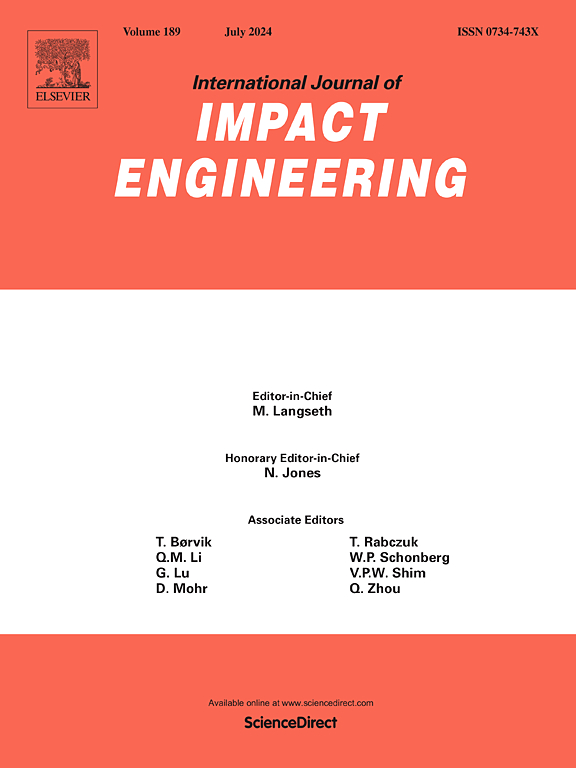Determination of dynamic flow stress equation based on discrete experimental data: Part 1 Methodology and the dependence of dynamic flow stress on strain-rate
IF 5.1
2区 工程技术
Q1 ENGINEERING, MECHANICAL
International Journal of Impact Engineering
Pub Date : 2025-05-24
DOI:10.1016/j.ijimpeng.2025.105403
引用次数: 0
Abstract
In this study, a framework to determine the dynamic flow stress equation of materials based on the discrete data of varied (or instantaneous) strain-rate from split Hopkinson pressure bar (SHPB) experiments is proposed. The conventional constant strain-rate requirement in SHPB test is purposely relaxed to generate rich dynamic flow stress data (FSD) which are widely and diversely distributed in the plastic strain and strain-rate space. Data qualification criteria were proposed to screen the raw FSD, with which qualified FSD (a coarsely filled matrix) were obtained. The qualified FSD were used to train the Artificial Neural Network (ANN) to obtain finely filled FSD, which were decomposed using Singular Value Decomposition (SVD) method. The flow stress equation can be obtained from the SVD results with high accuracy. In addition, the flow stress equation based on the conventional method was established and evaluated. Five uncertainties inherent in the conventional method in the determination of the flow stress equation were identified. The comparison between the proposed and the conventional flow stress equations demonstrates the effectiveness and reliability of the flow stress equation obtained from the proposed method.
基于离散实验数据的动态流变应力方程的确定:第一部分:方法及动态流变应力与应变率的关系
本文提出了一种基于Hopkinson压杆(SHPB)实验中应变速率变化(或瞬时)的离散数据确定材料动态流变应力方程的框架。SHPB试验中有意放宽常规的恒定应变率要求,从而产生丰富的动态流变应力数据(FSD),这些数据在塑性应变和应变率空间中分布广泛而多样。提出了筛选原始FSD的数据资格标准,获得了合格的FSD(粗填充矩阵)。利用确定的FSD对人工神经网络进行训练,得到填充精细的FSD,并利用奇异值分解(SVD)方法对FSD进行分解。根据奇异值分解结果,可以获得高精度的流动应力方程。建立了基于常规方法的流变应力方程,并对其进行了评价。确定了传统方法在确定流动应力方程时所固有的五个不确定性。通过与传统流动应力方程的比较,验证了该方法得到的流动应力方程的有效性和可靠性。
本文章由计算机程序翻译,如有差异,请以英文原文为准。
求助全文
约1分钟内获得全文
求助全文
来源期刊

International Journal of Impact Engineering
工程技术-工程:机械
CiteScore
8.70
自引率
13.70%
发文量
241
审稿时长
52 days
期刊介绍:
The International Journal of Impact Engineering, established in 1983 publishes original research findings related to the response of structures, components and materials subjected to impact, blast and high-rate loading. Areas relevant to the journal encompass the following general topics and those associated with them:
-Behaviour and failure of structures and materials under impact and blast loading
-Systems for protection and absorption of impact and blast loading
-Terminal ballistics
-Dynamic behaviour and failure of materials including plasticity and fracture
-Stress waves
-Structural crashworthiness
-High-rate mechanical and forming processes
-Impact, blast and high-rate loading/measurement techniques and their applications
 求助内容:
求助内容: 应助结果提醒方式:
应助结果提醒方式:


